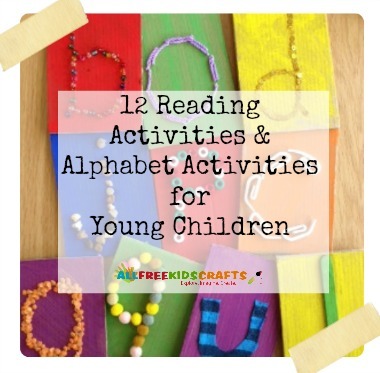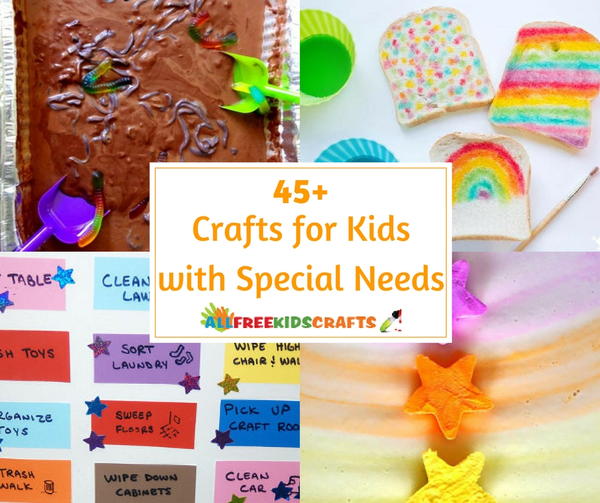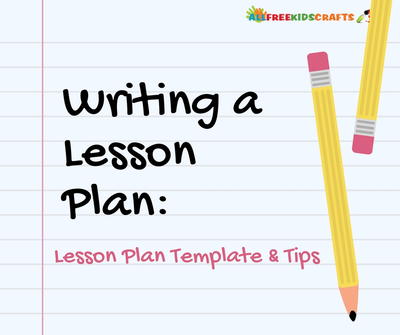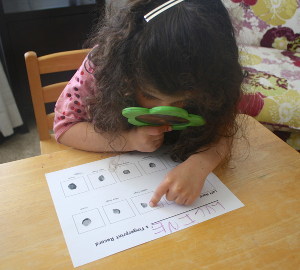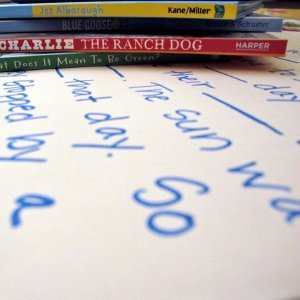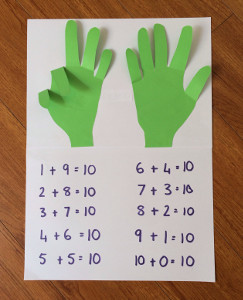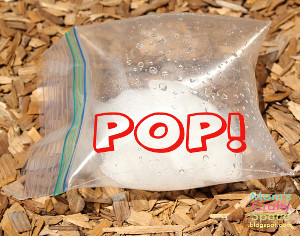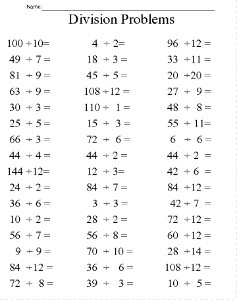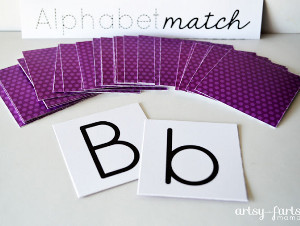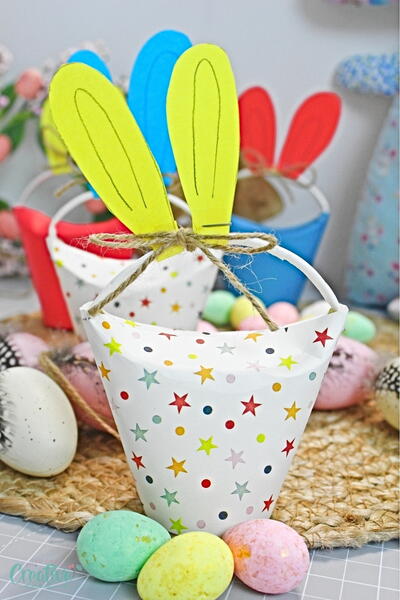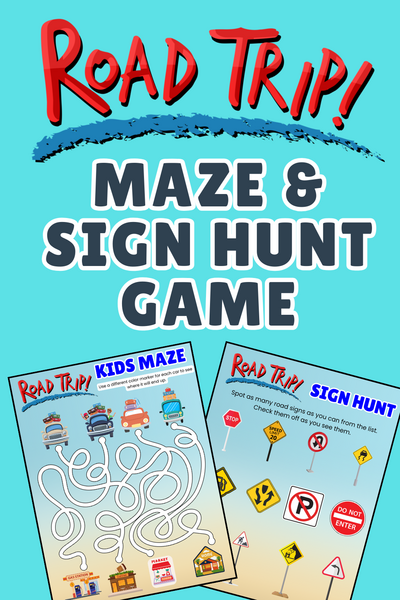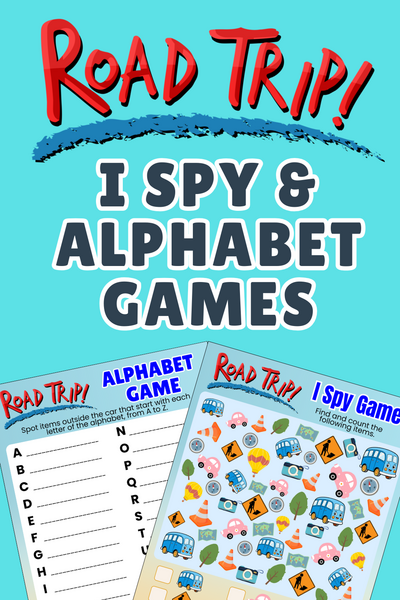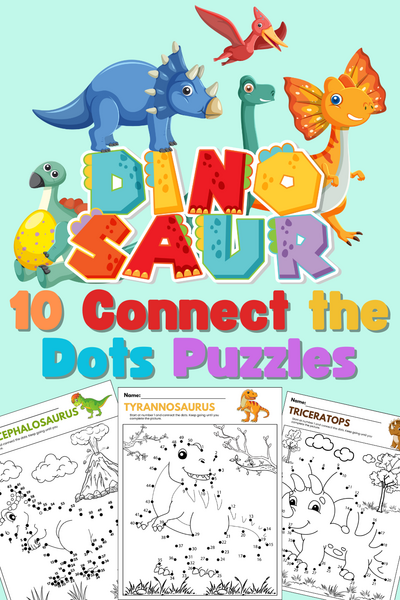Writing a Lesson Plan: Lesson Plan Template and Tips
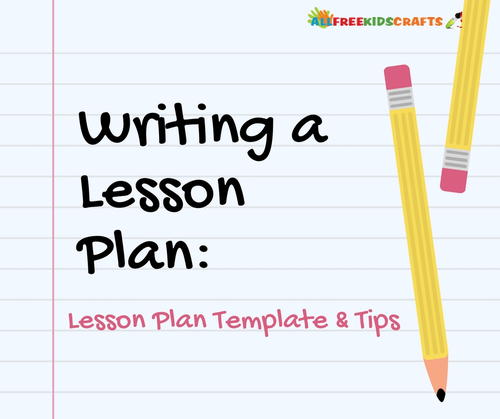
Planning the first lesson for any teacher can seem daunting. Where do you begin? What should you keep in mind? This guide to Writing a Lesson Plan, complete with a lesson plan template and expert tips, will make the planning process much less stressful. Your students will thank you, and so will your restless brain!
Whether you are a homeschooling parent or novice teacher, learning how to write a lesson plan properly will make class far more engaging and useful for your students. This guide will show you a step-by-step process based on the theory of Backwards Design to make sure that your students will reach their educational goals with ease.
Three Questions to Ask Before Writing a Lesson Plan
Before you dive into selecting the activities, you want to first start from the end goal. This is based on the educational theory of Backwards Design: start with the end goal of the lesson, and then plan the lesson backward to make sure that every part of the lesson helps the students reach that goal. This will make it easier to narrow down lesson plan ideas and make sure you’re supporting the learning process as much as possible. Ask yourself these 3 key questions before you start writing a lesson plan:
1. What do I want the students to be able to do by the end of the lesson?
Begin by choosing the learning target (educational objective) of the lesson. Example: I will be able to identify what a hexagon is. Click here for a more in-depth explanation of learning targets.
Depending on where you are teaching, you may also have to make sure your lesson fits with state standards. Click here for Common Core State Standards.
2. How will I judge whether or not (or to what extent) the students have achieved the learning target after the lesson?
Next, you'll want to choose the assessment for your lesson. You're not just limited to tests and quizzes! You can use exit slips, projects, or homework assignments.
3. Which activity would be best to teach the students a certain concept?
You may think that the step of choosing your activities should come first in the lesson planning process, but it’s actually more helpful to start from your learning target. That way, you can make sure your activities will actually help students reach the learning goal!
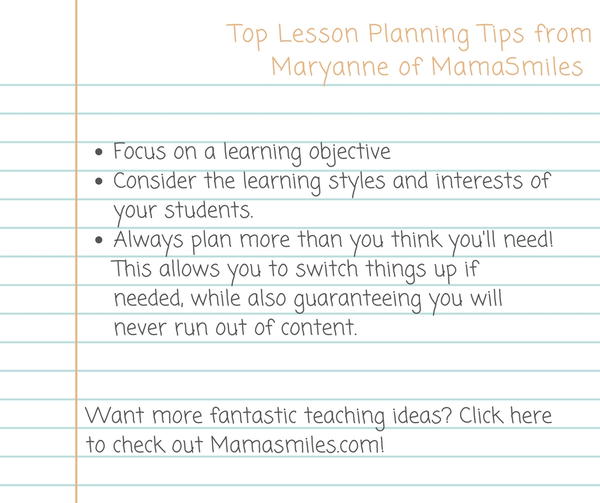
Lesson Plan Outline
Now that you’ve figured out your learning target, assessment, and general activities, it’s time to tackle the details of writing a lesson plan. Print out the free lesson plan template to follow all the steps to creating a well-rounded lesson.
Time – how long will your lesson take? If you’re a teacher at a school, this will already be determined by the class periods, but if you’re a homeschooling parent, you will want to plan how long the lesson will be. Sometimes, you may need to spread out a lesson for a few days to make sure that students really understand a concept.
Materials – what equipment, printouts, and other materials will I or my students need? This may seem obvious but planning what materials you will need ahead of time will make a lesson go much smoother. Example: you may need to print out worksheets the day before, borrow a book from the library, or even book a computer lab for a writing lesson.
Introduction – This is a way to get your students excited about your lesson! There are endless ways you can introduce a lesson, and this will depend on your students. You can give a fun fact, connect it to a popular movie or song, or ask what your kids already know about the topic. If it’s a completely new concept, it can also be helpful to connect what they already know to the new ideas. Example: Today we’re going to learn about hexagons. Remember when we learned about pentagons last time? Now, we’re going to learn about a shape that has one more side than a pentagon, the six-sided hexagon!
Activities – What activities you choose will depend on your students, the content, and your teaching style. Here is a general layout of lesson activities (as listed in the lesson plan template):
Direct Instruction (Teacher’s instruction) – This is the part of the lesson when you explain the new concept. Think about what would help aid your students’ learning, such as videos, pictures, and worksheets. Example: For a lesson on addition, the teacher explains what it means to add 2 numbers on the whiteboard, and models how to add by writing out several examples on the board.
Guided Practice (Students do an activity with the teacher’s help) – Before they can dive right into doing an activity on their own, students need to be guided by the teacher to make sure that they fully grasp the new lesson. Think of this like when your child is learning to ride a bike, and you are holding on to them to keep them balanced before they ride on their own. Example: the teacher puts a new addition problem on the board and asks students what to do for each step of solving the problem, correcting or giving hints if they get confused. Check out the lesson plan ideas below for free creative ideas!
Independent Practice (Students do an activity by themselves) – Now that they’ve been taught a new idea and had practice with the teacher’s help, students will practice the new concept on their own. This is like when your child begins riding a bike by themselves without any parental support. You can have students work by themselves or practice the new concept with other students. Examples: reading a passage by themselves and answering questions, working with desk buddies to solve a math problem, practicing writing a letter of the alphabet.
Assessment – This is how you will know if the students achieved the learning target. All of the activities of the lesson should have made it possible for your students to reach the goal! How the students did on the assessment will show you whether or not your class can move on to the next concept or need an additional lesson on the same topic.
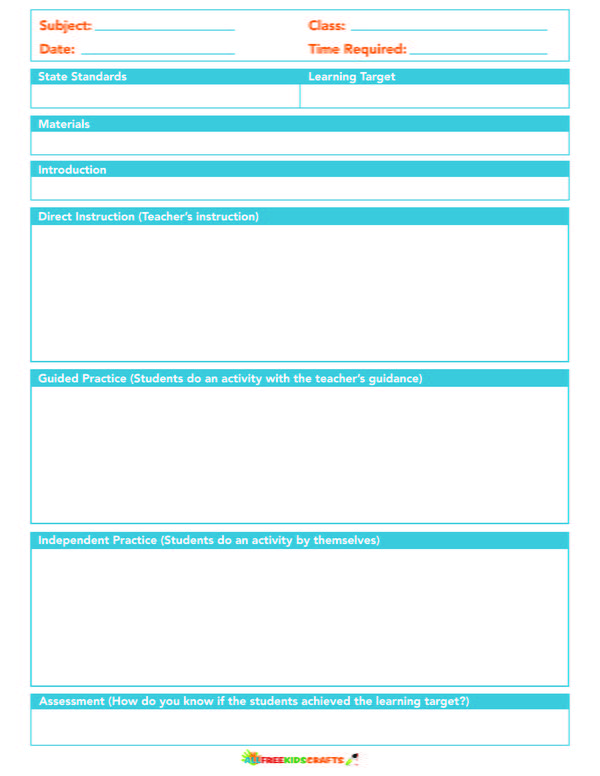
Accommodating For All Kids
If you're teaching more than one student, it's important to consider how to adjust your lesson to suit all your students' levels and needs. Here are some expert teacher tips from Betsy Weigle of Classroom Caboodle:
"The best overall strategy to focus on when creating a lesson plan that accommodates all kids is the question approach. Questions do several things: They cause children to engage and think deeply about the subject; they reinforce knowledge when kids must respond in their own words, and they help you assess the level of understanding of each student so you know when you need to back up a bit and when you can move ahead.
The questions that should be used in all lessons include:
“Why do we need to know this?”
“Why is this so important that we are going to spend a week learning it?”
“How do you know this is the right answer?”
Practice the answers yourself before teaching to ensure that your lesson will provide the information the kids need to formulate their thoughts.
Questions are a very powerful technique that will help refine your lessons plans for groups of all sizes."
For more fantastic lesson plan ideas, check out the Classroom Caboodle!
Planning Literacy Lesson Plans
If you're planning a literacy lesson plan, follow some of these expert tips from Jodi of Meaningful Mama:
"When planning reading lessons for kids, I recommend considering all the different learning styles. You will have kids that need a hands-on experience to engage more deeply with literature. Others will respond to books through auditory exposure. Still, others will be drawn in by having a verbal discussion or visual presentations. Every lesson doesn’t need to have every single sensory experience. However, be aware throughout your lessons plans that the more you can accommodate the different learning styles, the more you will find true interaction with the literary world. Some studies show that 60% of the population are visual learners. While this is important to keep in mind, it is also vital to know your students well to see what resonates with these individuals."
For more creative lesson plan ideas and tips on homeschooling, check out the Meaningful Mama!
Science Activities for Kids
If you're looking for science activities for kids for your next STEM lesson, don't miss out on this collection of Science Crafts and Space Crafts for Kids! You can get all of these craft and experiment tutorials for free!
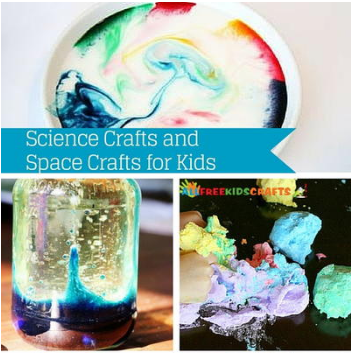
Do you have any questions on how to write a lesson plan? Comment below!

